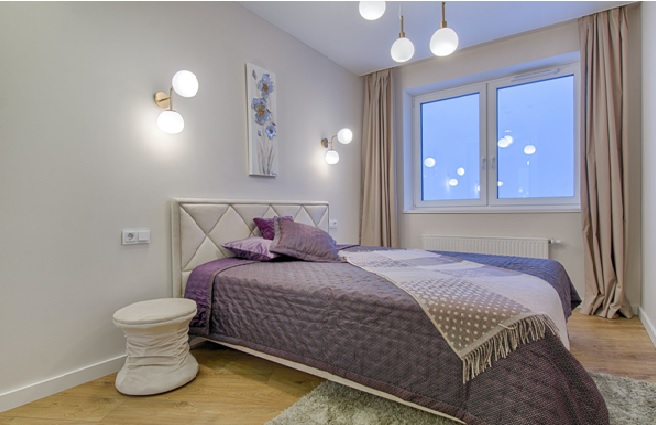
If you visit any bed basics and furnishing store, you’ll find specifically organized aisles dedicated to every type of bedding essentials. There are soft, comfortable sheets that make sliding into bed an everyday joy, a quilted cotton blanket to keep you cool all night, fluffy pillows, throws for winters and different types of bedding toppers — comforter, duvet cover, quilt, bedspread, runners and more.
What’s the difference and what do you use with what and how? Why should you choose one over the other? Bedsheets and blankets are mostly functional, but the bedding topper usually has a more decorative purpose—it sets the tone for your personal bedroom’s style and feel.
So when it’s time to give your sleep sanctuary a new fresh look, add some gorgeous and plush bedding toppers and you’re all set.
Still, Confused? Let’s find out which type of topper is the best choice for your bedroom.
1. Quilts
Apart from being a type of bedding, quilting is an artistic work as well as a style of manufacturing.
Traditional quilts mainly comprise of three layers: cloth top, an inner layer of batting, and bottom, all stitched together with running stitches. The top layer is crafted from many different pieces of fabric stitched together into complex and decorative patterns. The middle batting is a thin inner layer of wool or down, while the bottom layer is usually a solid piece of fabric.
Occasionally quilts were found with a single piece of fabric on the top, called whole-cloth quilt, which were the most popular type of bedcovering found in America in the eighteenth century. However, modern quilts are not always intended for use as bedding, they are often layered as gorgeous throws, runners or tablecloths.
There are numerous classic patterns and traditions regarding the design and varied characteristics of quilts. Many of them are crafted or given to mark important events of life such as a wedding, childbirth, and graduations.
Today, inexpensive quilts made with sewing machines are available in the stores. Patterns of these quilts are sometimes dyed onto the fabric instead of pieced together with different fabric scraps. Colour schemes of quilts can be very bright, a mix of neutral/subtle colours, or a coloured pattern on a white or more solid background.
Usually made from cotton or cotton blends, cotton quilt blankets are lightweight, thus perfect for summers or as a winter topper with warm blankets underneath. However, they are an excellent option if you are staying in a country, coastal region, or looking for a more casual decorating style.
2. Bedspreads
These are single-layer bedding toppers that cover the entire bed right down to the floor, you may often find them covering the pillows as well. Generally, bedspreads have elaborate fluffy pompom, corduroy, or chenille finishes, or fringes along the bottom edges. They are mostly available in solid colours but there are printed bedspreads also available in the market.
Though you may still find bedspreads in hotels, they are somewhat not in trend for home use. However, they are good for guest rooms, or for any bedroom with a retro decor style having fun and wild accents.
Bedspreads are soft and very lightweight, so are best for summers, or you can use it over a blanket in cooler weather.
3. Comforters
Comforters are the most popular type of bedding topper in America. They are thick bedding topper filled usually with down or a synthetic substitute such as polyester batting. Most of the comforters are neatly sewn-through or quilted (sometimes) to secure the filling, but unlike a quilt, the stitching of comforters are not ornately patterned. The loft (thickness) and type of filling determine the warmth and insulation of the comforter.
Comforters are usually warm enough to use without a blanket underneath on chilly cold nights. Often, you will find comforters in stores available as a set with matching stylish shams, and in any texture, colour, style or design you desire.
4. Duvets
Often people confuse ‘duvet’ to the duvet cover, technically a duvet is like a comforter, usually plain white hue and filled with down feathers, while the duvet cover is the fabric envelope that fits over the duvet.
These are the most popular style of bedding in major areas of Europe, but in the last two decades, Americans have also started preferring to use duvets and their covers over the top sheets of the beds. The duvet cover protects the inner comforter and can be easily removed for laundry.
In the summer, you can use the duvet cover on its own as a bedding topper, and add extra blankets under the duvet when you feel cold. You can also place matching shams and create a contemporary or sophisticated bedroom ensemble.
They are also available in fabrics ranging from cotton, silk, synthetics and blends, sometimes with delicate embroidery or other embellishments.
Generally, duvets work well for minimalist, sophisticated, or modern bedrooms. Also, a good choice for you if you wish to reduce the complexity of making a bed, use it as a single lightweight covering instead of the combination of bed sheets, blankets, quilts and other bed covers.




